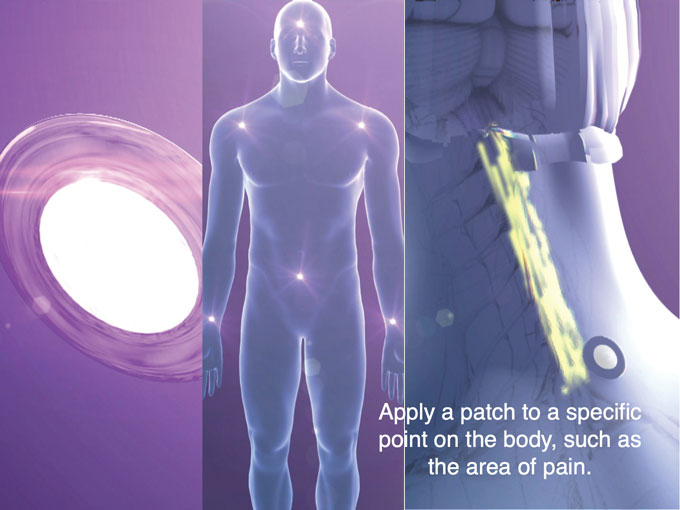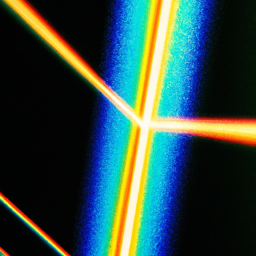Infrared light therapy has emerged as an exciting field with endless possibilities for innovation and advancements in the realm of healthcare. From pain relief to skin rejuvenation, infrared light therapy offers a non-invasive and drug-free solution for a wide range of ailments. As researchers and scientists continue to explore its potential, the future of infrared light therapy holds promise for even more groundbreaking developments. Join us as we explore the latest innovations and possibilities that lie ahead in this remarkable field.
Understanding Infrared Light Therapy
What is infrared light therapy?
Infrared light therapy, also known as infrared phototherapy or photobiomodulation, is a form of alternative medicine that utilizes specific wavelengths of light to promote healing and improve well-being. Unlike visible light, infrared light is not visible to the human eye but can be felt as heat. This therapy harnesses the beneficial properties of infrared light to stimulate cellular activity and enhance various physiological processes in the body.
How does infrared light therapy work?
Infrared light therapy works by delivering infrared light to the body’s tissues and cells. When the skin absorbs this light, it stimulates the production of ATP (adenosine triphosphate), the main energy source for cellular activities. This increased energy production helps to promote healing, reduce inflammation, and alleviate pain. Additionally, infrared light therapy can also improve blood circulation, boost collagen production, and enhance the delivery of oxygen and nutrients to the tissues.
Benefits of infrared light therapy
The benefits of infrared light therapy are extensive and have been recognized in various fields. Some of the key advantages include pain relief, improved skin health, enhanced athletic performance, and relaxation. By targeting specific areas of the body, infrared light therapy can help alleviate conditions such as arthritis, muscle and joint pain, and chronic fatigue syndrome. It is also known to promote collagen synthesis, which aids in reducing wrinkles, scars, and overall skin rejuvenation. Additionally, athletes and fitness enthusiasts often turn to infrared light therapy to accelerate muscle recovery and enhance athletic performance.
Current Applications and Advancements
Medical applications of infrared light therapy
Infrared light therapy has found numerous applications in the medical field. One of the main areas of focus is wound healing. By promoting blood circulation and stimulating cell growth, infrared light therapy has proven effective in accelerating the healing process for various types of wounds, including diabetic ulcers and surgical incisions. It has also shown promise in the treatment of chronic pain conditions, such as fibromyalgia and neuropathy.
Infrared light therapy in skincare
Infrared light therapy has gained popularity in the skincare industry due to its ability to rejuvenate the skin and improve its overall appearance. Infrared light stimulates the production of collagen, a protein that provides structure and elasticity to the skin. This can reduce the appearance of wrinkles, fine lines, and sagging skin. Moreover, it can also help to minimize blemishes, scars, and age spots, giving the skin a more youthful and radiant complexion.
Infrared light therapy for pain management
One of the primary applications of infrared light therapy is in pain management. The therapy’s ability to penetrate deep into the tissues and promote circulation helps alleviate pain and inflammation. This makes it a viable option for individuals suffering from arthritis, sports injuries, or chronic pain conditions. Infrared light therapy can provide relief without the need for medication or invasive procedures, offering a safe and non-invasive alternative.
Sports and fitness applications of infrared light therapy
In the realm of sports and fitness, infrared light therapy has gained recognition for its potential to enhance performance and aid in muscle recovery. By increasing blood flow and oxygen delivery to the muscles, it can reduce muscle fatigue, improve endurance, and accelerate the healing process after intense workouts or injuries. Athletes often utilize infrared light therapy to optimize their training regimes and enhance overall athletic performance.
Innovative Technologies in Infrared Light Therapy
LED-based infrared light therapy
LED-based infrared light therapy is a modern advancement in the field of photobiomodulation. LEDs (light-emitting diodes) provide a more efficient and targeted delivery of infrared light. These devices are compact, portable, and easy to use, making them convenient for home-based treatments. LED-based infrared light therapy offers a cost-effective and accessible option for individuals seeking the benefits of this therapy.
Photobiomodulation devices
Photobiomodulation devices, also known as low-level laser therapy (LLLT) devices, utilize laser technology to deliver controlled doses of infrared light to the body. These devices come in various forms, including handheld devices and in-clinic equipment. Photobiomodulation devices offer precise and powerful treatment options, allowing for targeted therapy in medical and clinical settings.
Infrared saunas
Infrared saunas have become increasingly popular as a means of experiencing the benefits of infrared light therapy in a relaxing and detoxifying environment. These saunas use infrared heaters to emit infrared light, creating an environment that promotes sweat production and detoxification. Infrared saunas offer a therapeutic and rejuvenating experience for individuals seeking relaxation, pain relief, and enhanced well-being.
Smart wearables for infrared light therapy
Advancements in technology have paved the way for smart wearables that incorporate infrared light therapy. These wearable devices, such as infrared light therapy patches and garments, provide a convenient and hands-free approach to receiving the benefits of infrared light. Smart wearables can target specific body areas and offer customizable treatment settings, allowing individuals to incorporate infrared light therapy seamlessly into their daily routines.
Potential Future Applications
Infrared light therapy in mental health
As research progresses, there is growing interest in exploring the potential of infrared light therapy in mental health treatments. Preliminary studies have shown promising results in using infrared light therapy for conditions such as depression, anxiety, and cognitive decline. The non-invasive nature of infrared light therapy and its ability to stimulate cellular activity and improve blood flow make it an attractive option for mental health interventions.
Infrared light therapy in cancer treatment
Researchers are actively investigating the potential of infrared light therapy in cancer treatment. While this field is still in its early stages, studies have shown that infrared light can enhance the effectiveness of certain cancer treatments, such as photodynamic therapy. Additionally, infrared light therapy may help alleviate cancer-related symptoms, enhance quality of life, and improve the overall well-being of cancer patients.
Infrared light therapy and neurological disorders
Neurological disorders, such as Parkinson’s disease and Alzheimer’s disease, present significant challenges in terms of treatment and management. Emerging research suggests that infrared light therapy may offer a promising avenue for addressing these disorders. By targeting specific brain regions, infrared light therapy has the potential to improve neural function, reduce inflammation, and slow down disease progression.
Infrared light therapy for wound healing
Wound healing is an area where infrared light therapy has already demonstrated significant potential. In the future, further advancements in this field may include the development of targeted infrared light therapy devices for specific wound types and sizes. These devices could provide personalized treatment plans and optimize healing outcomes for individuals with acute and chronic wounds.
Exploring infrared light therapy in eye health
The delicate nature of the eyes requires specialized approaches to treatment. Infrared light therapy is being explored as a potential solution for various eye conditions, such as age-related macular degeneration (AMD) and diabetic retinopathy. By stimulating cellular repair and reducing inflammation, infrared light therapy may help preserve vision and slow down disease progression in these conditions.
The Role of Artificial Intelligence
AI-powered personalized infrared light therapy
Artificial intelligence (AI) has the potential to revolutionize infrared light therapy by enabling personalized treatment plans. AI algorithms can analyze individual characteristics, such as skin type, medical history, and treatment goals, to determine the optimal parameters for each person’s infrared light therapy sessions. This personalized approach maximizes the effectiveness of the therapy and enhances patient outcomes.
Predictive analytics in optimizing treatment plans
Predictive analytics can play a crucial role in optimizing treatment plans for individuals undergoing infrared light therapy. By analyzing large datasets of patient information and treatment outcomes, predictive analytics can identify patterns and factors that contribute to successful therapy. This knowledge can inform healthcare professionals in tailoring treatment protocols and adjusting parameters to improve patient experiences and results.
Automated monitoring and adjustment systems
Infrared light therapy devices equipped with automated monitoring and adjustment systems can enhance treatment precision and safety. These systems can continuously collect data, such as skin temperature and tissue response, to ensure that optimal therapeutic levels are maintained during each session. Automated monitoring and adjustment systems provide real-time feedback and minimize the risk of adverse effects, making infrared light therapy safer and more efficient.
Challenges and Considerations
Standardization and regulation
As the field of infrared light therapy expands, standardization and regulation become essential to ensure quality and safety. Establishing standardized treatment protocols, safety guidelines, and training programs for healthcare professionals will contribute to the widespread acceptance and usage of infrared light therapy. Regulatory bodies play a crucial role in monitoring and certifying devices and treatments to protect the public’s well-being.
Safety concerns and precautions
While infrared light therapy is generally considered safe, certain precautions should be taken to minimize risks. Protective eyewear should be used to shield the eyes from direct exposure to infrared light. Additionally, individuals with conditions such as photosensitivity, skin cancer, or certain medications should consult with a healthcare professional before undergoing infrared light therapy. Proper education and guidance regarding treatment duration, frequency, and intensity are necessary to ensure safe and effective therapy.
Cost-effectiveness and accessibility
The cost of infrared light therapy devices and treatments can be a barrier for widespread adoption. As technology evolves and becomes more accessible, the affordability of infrared light therapy is expected to improve. Collaborations between researchers, healthcare providers, and industry manufacturers can help drive down costs and increase accessibility to infrared light therapy for individuals of various socio-economic backgrounds.
Additional Research and Clinical Trials
Ongoing studies in infrared light therapy
Numerous ongoing studies continue to explore the potential applications and effectiveness of infrared light therapy. These studies aim to further understand the underlying mechanisms, optimal treatment parameters, and long-term effects of infrared light therapy. By expanding the knowledge base, ongoing research contributes to the ongoing advancements and improvements in the field.
Exploring new treatment protocols
The evolving nature of infrared light therapy calls for continuous exploration of new treatment protocols. Researchers and clinicians are investigating different combinations of wavelengths, treatment durations, and intensities to optimize therapeutic outcomes. These new treatment protocols may be tailored to specific conditions, making infrared light therapy even more effective and versatile in addressing a wide range of health concerns.
Collaborations and Interdisciplinary Approaches
The convergence of infrared light therapy with other therapies
Infrared light therapy has the potential to complement and enhance other traditional and alternative therapies. Collaborations between healthcare professionals specializing in different fields, such as dermatology, pain management, and physical therapy, can lead to innovative treatment approaches. The convergence of infrared light therapy with other therapies may result in synergistic effects and improved overall patient outcomes.
Cross-disciplinary research for innovation
Cross-disciplinary research is crucial for driving innovation in the field of infrared light therapy. Collaboration between researchers, engineers, biochemists, and healthcare practitioners enables a comprehensive understanding of the therapy’s mechanisms and expands its potential applications. By combining expertise from multiple disciplines, cross-disciplinary research fosters creativity and innovation in advancing infrared light therapy.
Consumer Perspectives: Adoption and Acceptance
User experiences and testimonials
User experiences and testimonials play a vital role in shaping the adoption and acceptance of infrared light therapy. As more individuals experience the benefits firsthand, word-of-mouth recommendations and personal accounts contribute to the growing awareness and interest in this therapy. Sharing success stories and positive experiences can help alleviate any skepticism and encourage others to explore infrared light therapy as a viable treatment option.
Public awareness and education
Public awareness and education about infrared light therapy are pivotal in promoting its adoption and acceptance. Healthcare organizations, advocacy groups, and healthcare professionals have a responsibility to provide accurate and accessible information to the public. Educating individuals about the benefits, safety considerations, and potential applications of infrared light therapy empowers them to make informed decisions about their health and well-being.
Integration of infrared light therapy into healthcare systems
To fully realize the potential of infrared light therapy, it needs to be integrated into mainstream healthcare systems. This integration involves establishing guidelines for healthcare professionals, incorporating training programs, and integrating infrared light therapy into existing treatment protocols. By incorporating infrared light therapy into healthcare systems, individuals can access this therapy as part of their regular healthcare routine.
Conclusion
Understanding the future of infrared light therapy requires recognizing the current advancements and potential applications of this innovative therapy. From medical applications to skincare, pain management to sports performance, infrared light therapy offers a wide range of benefits. With emerging technologies, such as AI-powered personalized treatments and innovative wearables, infrared light therapy is poised to become even more versatile and accessible. Collaborations, ongoing research, and public education are instrumental in driving the adoption and acceptance of this therapy. As the field of infrared light therapy continues to evolve, its potential to revolutionize healthcare and well-being holds great promise. By harnessing the power of infrared light, we embark on a journey towards a future where healing and wellness are transformed through the light spectrum’s therapeutic potential.





